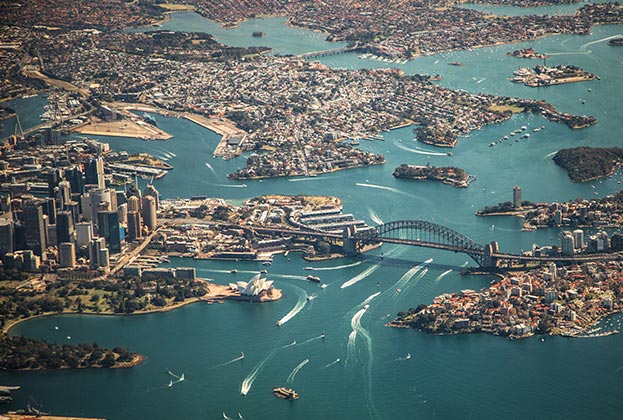Inflationary pressures and difficult market conditions in the prime residential markets across the globe lead to a subdued set of growth performance figures in 2023
In the face of ongoing economic uncertainty and a higher interest rate environment, prime residential markets in world cities were muted but remained resilient, with capital values and rents seeing positive growth. This growth is forecast to reduce further in 2024 as some formerly high-growth markets slow to more sustainable levels from their post-pandemic surges.
Rents outperform price growth
Continuing a trend from the past year, prime rental value growth outpaced capital value growth in 2023, increasing by 5.1% for the year and 2.3% for the second half of the year. This trend has largely been driven by lack of stock in many prime rental markets and increasing levels of demand from individuals and families who would look to purchase a property but are holding off until the economic and interest rate situations stabilise.
Lisbon, by far and away, saw the highest rental growth for the second half of 2023, with rents growing by an average of 22% over the period. Entering the purchase market has become a more protracted decision, both because of rising house prices and interest rates on loans. But the supply of houses on the rental market has not kept pace with demand, leading to a rise in the price of houses for rent throughout Portugal.
Globally, prime yields averaged 3.1% in 2023, and moved out by more than 10 basis points in seven markets across the Savills World Cities Index, led by Lisbon, Berlin, New York, and Barcelona, with each city benefitting from an increase in international and domestic demand leading to growth in their prime rental markets.
Price rises persist
In spite of economic headwinds, capital values remained in positive territory, rising by an average 2.2% across the 30 cities covered in our index in 2023, with the second half of the year recording 1.1% growth.
Dubai continues to be a hotspot for prime residential property, with capital values increasing 17.4% for the year, with 5.6% recorded in the second half. The market is still relatively competitively priced, by global standards, at $850 per square foot, offers a comparatively low cost of living, a relatively easy visa process, and warmer climate which continues to attract international and domestic buyers.
Some cities felt global economic turbulence more than others, particularly in the second half of 2023. New York and San Francisco, with the former seeing a muted return to office and the latter still weathering tech turbulence. Hong Kong’s ongoing political and economic uncertainty continued to hamper its prime residential markets. Prime prices in the city fell by -3.7% over 2023, but it remains the most expensive prime residential market in the world at $3,970 per square foot.

Global city: Dubai
Looking ahead
2024 promises to bring an easing of inflationary pressures and with it a ‘wait and see‘ environment
Economists, policymakers, and market participants broadly agree on the outlook for next year: inflationary pressures will gradually abate – with the easy gains largely now behind us – necessitating ‘higher for longer’ interest rates and the likelihood of a sustained period of weak global growth. This is the basis of the ‘soft landing’ narrative that has now become the consensus.
Even though prime residential property is less mortgage-reliant than mainstream residential property, weaker macroeconomic conditions will dent sentiment; many potential buyers and sellers will adopt a ‘wait and see’ approach in a higher interest rate environment. A less active sales market will continue to boost prime rental markets, with rental value growth expected to exceed capital value growth once again this year.
Demographic changes, urbanisation and the global economic outlook will all continue to have effects on global property markets, changing the type and location of properties desired by buyers and renters.
Countries which account for approximately 40% of the global population will go to the polls this year, and housing will likely be front of mind for many voters and policymakers alike.
We expect an average prime residential price growth of 0.6% across our 30 cities, some way down on the 2.2% achieved last year. This is largely the result of some markets which had been outperforming returning to historic average trends. The rarefied nature of prime residential, coupled with a general lack of stock in many cities, will likely prevent a sharper slowdown.
The potential for central bank interest rate cuts during mid to late of 2024 may boost activity across prime property markets and could surprise on the upside for pricing in the latter part of the year.
Read the other articles within Savills Prime Residential Index: World Cities below
.jpg)




